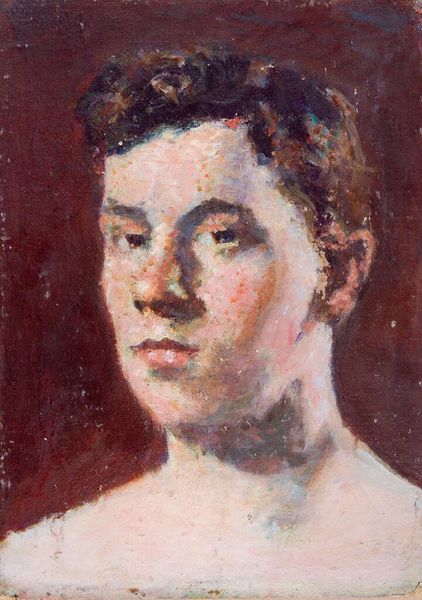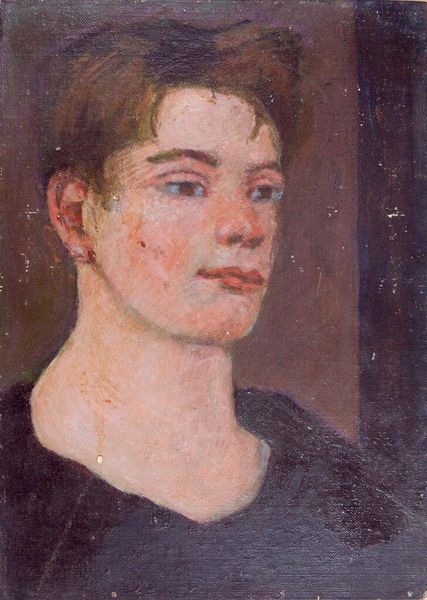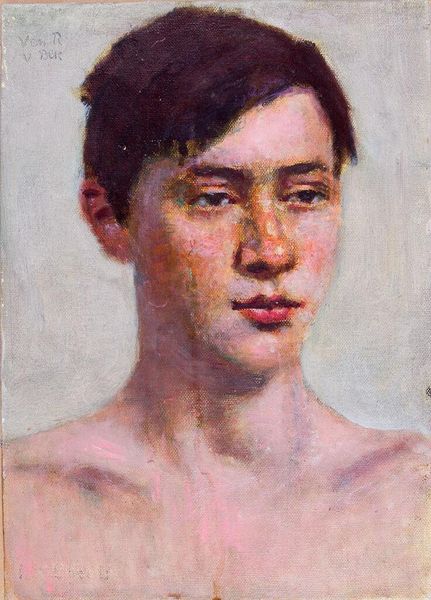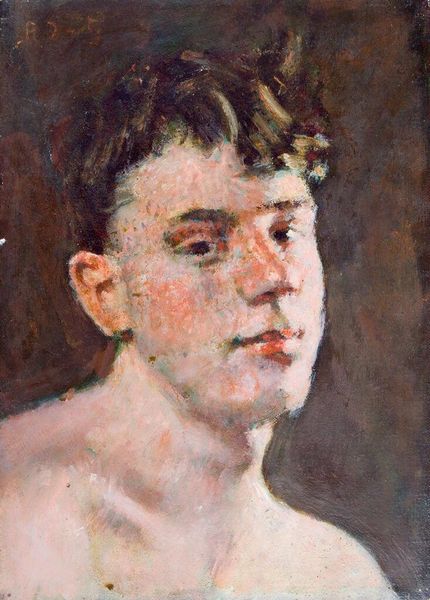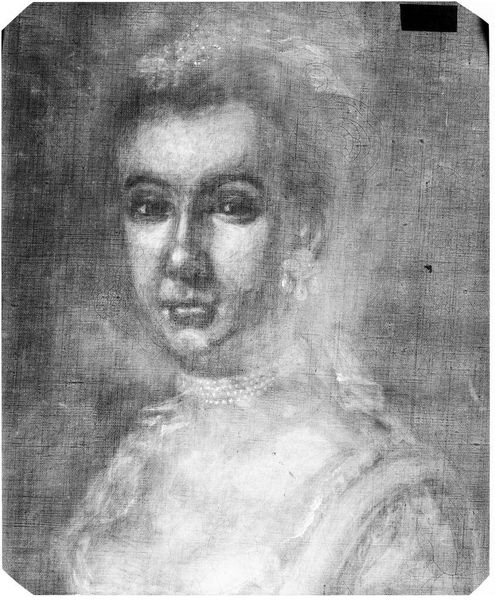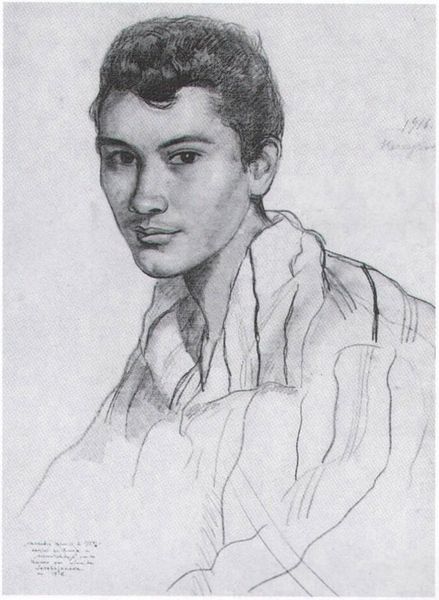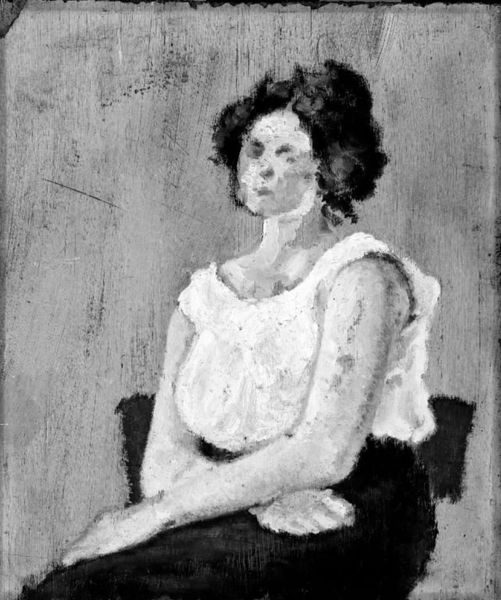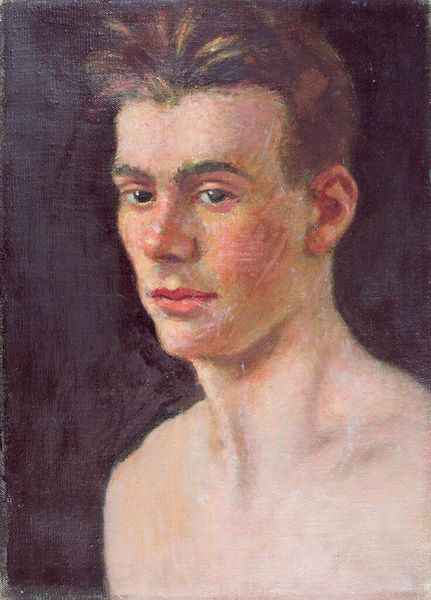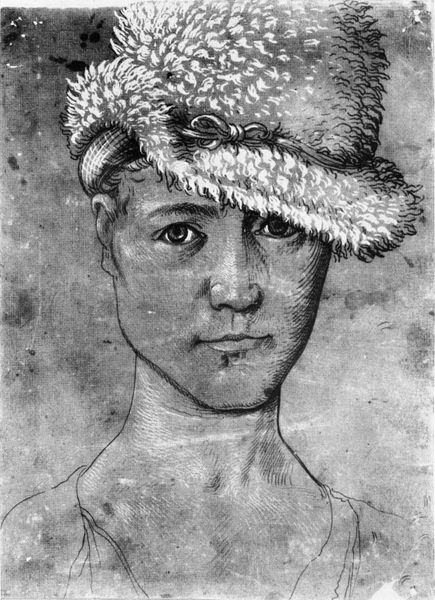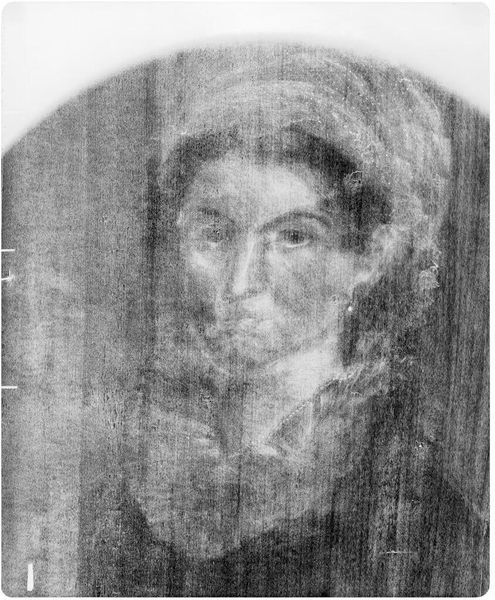
painting
#
portrait
#
facial expression drawing
#
head
#
face
#
portrait image
#
portrait
#
painting
#
male portrait
#
portrait reference
#
portrait head and shoulder
#
nose
#
portrait drawing
#
facial study
#
facial portrait
#
academic-art
#
lady
#
forehead
#
female-portraits
#
modernism
#
realism
#
digital portrait
Copyright: Public domain
Editor: This is a painting entitled "Portraits" by Thomas Eakins. It appears to be an unfinished sketch or study, rendered in grayscale. There's something hauntingly direct about the gaze of the figure. What’s your read on this piece? Curator: This piece is compelling when we situate Eakins within the socio-political climate of late 19th-century America. How does this direct gaze challenge conventional portraiture, particularly representations of women during that era? Does it subvert expectations of femininity and passive beauty? Editor: I suppose it does. The stark lighting and unidealized features definitely set it apart from typical portraits of the time. Curator: Exactly. And that subversion speaks volumes. Think about realism's emphasis on depicting life as it is, often challenging established social norms. Eakins wasn't just painting a likeness; he was engaging in a dialogue about representation, about power dynamics. The muted palette even reflects the somber tones that follow reconstruction and its shattered promises. Editor: That's a powerful connection. So, you're saying that the painting's artistic choices—the realism, the unidealized figure, the gaze—all contribute to a commentary on gender and societal expectations of that period? Curator: Precisely. Consider, too, who had access to portraiture, and who controlled those images. By presenting this individual in such a direct manner, Eakins disrupts the expected relationship between artist, sitter, and viewer, creating a space for questioning power structures. Editor: I hadn't considered that. Seeing it as a conversation about power dynamics makes it even more relevant. I never thought of art speaking on politics and feminism in the late 1800's! Curator: It’s through these intersectional lenses we gain a fuller understanding of art's potential. Editor: Absolutely. I'll definitely carry that approach with me moving forward. Thank you!
Comments
No comments
Be the first to comment and join the conversation on the ultimate creative platform.
